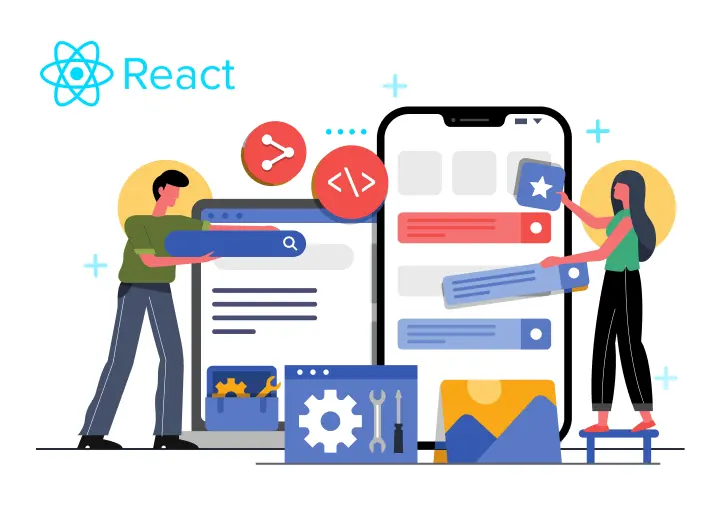To increase productivity and performance, businesses are working hard to improve mobile security and reduce latency. Cross-platform apps are on the rise, but native apps enhance user experience and retention more effectively. Several reasons can back up this statement, like native experience, an extension of specific OS features, improved performance, etc.
Businesses are increasingly using React Native platform for development since native mobile apps are more beneficial. Also, there is indeed a plethora of options for native SDLC. Although React Native is a JavaScript framework, it offers many features and benefits. The following article will introduce you to the top benefits of React Native app development.

What is React Native, and How Does it Work?
JavaScript-based React Native is a framework for developing front-end UIs. Developers can use the same codebase to develop mobile applications for Android and iOS with a single codebase. Because it is based on a JavaScript library, you can use the pre-built packages and functions to build each front-end UI element.
You must understand the exact working of this framework before you create React Native app. This will help you to proceed ahead with maximum clarity and no doubt. This platform uses a combination of JXL (markup language similar to XML) and JavaScript. Since React Native does not use HTML or CSS, it can easily establish communication between JS and native threads. It acts like a bridge by rendering native OS properties into JS code.
Benefits of Using React Native for Mobile App Development
Code Reusability
There are many React Native developers in the IT industry for its ability to reuse the code. It also accelerates development efficiently. In other words, developers can write the same code in two formats for iOS and Android. Due to React Native’s code reusability feature, they only need to write one code base to handle both operating systems.
Simple and Interactive User Interface
To be honest, React Native comes with a simple and interactive user interface. When coding to develop the application’s UI, you can do so in a modular form. A module containing parent and child components will describe each component of the UI. You can extend the child component into the parent or render the same according to the requirements. As a result, working with React Native won’t require much knowledge about the user interface.
Native Experience
React Native can offer users the benefits of iOS and Android separately through the bridge network. It’s a kind of function that you won’t often find in any other framework used for cross-platform development. This unique bridge connection that React Native can establish makes it so popular and ideal for mobile app development in 2025.
Live Reloading
Live reloading is one of the best features that make React Native popular for mobile app development. Any change to the source code will reload the entire application and start from the beginning. In life reloading, no current phase of the application is stored in the database or memory allocated dynamically. As a result, any user data stored in the memory will get erased, and users can use the application from the beginning. Besides, when you are deep into the application’s navigation, live reloading will ensure that change is integrated with all parts of the application.
Enhanced Software Stability
If you go through the latest and most popular React Native projects in real-time, you will realize that those applications are more stable. In other words, they are future-proof and won’t get affected much due to minor changes in market expectations. This means you won’t have to revamp the application multiple times, regardless of whatsoever. All you need to ensure is you use a well-defined modular architecture for the application development process so that it will be easy to incorporate complexity in the future.
Ideal for Advanced Apps
It is not easy for developers to develop advanced mobile applications that will use the same codebase and get rendered on both iOS and Android. Had it been any other platform, developers would have to work a lot of incorporating the UI components and ensure they perform expectedly. However, with React Native, the task gets much easier and swifter. Besides, you can add scalable and flexible complex functions to the application to ensure it can meet market standards.
Supports Third-party Integrations
Last but not least, React Native supports multiple integrations to establish seamless communication with third-party tools you use in your business. It can be a simple inventory and warehouse management tool or a complex embedded software controlling multiple verticals of your business. Regardless of what it is, you can easily incorporate the integration APIs and extend the functionalities of the code.
Conclusion
From the above discussions, it is evident that React Native 2025‘s future will be more impactful and lucrative for many businesses. Although many are yet to acknowledge this platform’s true potential, it is a matter of time before they invest in this specific framework. If you want to leverage React Native for your mobile business app, you can connect with Etelligens. The company has gained years of IT experience and will also help you understand the tech terms and dynamics of this JS-based framework. If you already have an iOS or Android app and want to migrate it to React Native, Etelligens will do the work for you.